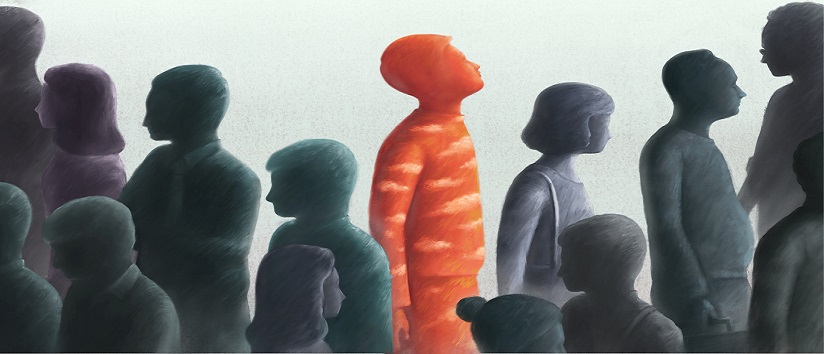Promoting inclusivity by reframing the conversation around mental health at work
25 August 2021
The events of this year have pushed concerns around diversity, equity, and inclusion (DEI) front and centre for nearly every HR leader – and quite rightly so. The last 18 months have been like no other. We’ve all experienced the ups and (more often than not) downs of the pandemic, but some communities have had to process much more. The Black Lives Matter movement, for instance, that erupted in response to the deaths of George Floyd, Ahmaud Arbery, and Breonna Taylor, sparked waves of protests across the world and made DEI a focus point. Not just for individuals, but for companies of all sizes, too.
It’s no secret that inclusive workplaces make for better businesses. A Deloitte survey revealed three-quarters of millennials say their organisation is more innovative when it has a culture of inclusion. Nearly 9 in 10 job seekers claim workplace diversity is an important factor when choosing a role. And study after study – from McKinsey to Harvard Business School – shows a clear link between employee diversity and company success, on a global scale.
Yet, only 55% of employees agree their organisations have policies that promote diversity and inclusion, according to Gallup. With the current focus on DEI and mental health support, companies need to acknowledge the opportunities and challenges that their employees face on account of their gender, race, ethnicity, ability, age and sexual orientation, but also economic diversity, diversity of experience, and diversity of education. Only by understanding these differences – and how aspects of identity can intersect – can businesses truly make workplace policies, interventions and language inclusive for all.
- See also: 'The power of language: re-thinking mental illness de-stigmatisation'
- See also: 'Workplace mental health – the flight over the cuckoo’s nest'
Mental health matters
Mental health and DEI are closely connected. We all have mental health, no matter where we sit on the various spectrums of engaged to disengaged; focused to distracted; or thriving to surviving. But employees from minority or underrepresented groups often face unique challenges. For example, triggering events or protests are likely to have a greater impact on minority groups who either experience them directly or do so through the media. The impact of the pandemic also affected some groups more than others.
In the workplace, daily discrimination – from a lack of representation to unconscious biases – can significantly impact the mental health of employees. Take a senior woman who’s repeatedly overlooked by her client addressing her male counterpart instead or someone who identifies as non-binary being misgendered by their bosses on multiple occasions – even when they’ve expressed their preferred pronouns. When someone’s identity is repeatedly questioned, undervalued or used against them, consciously or otherwise, their mental health is affected. Employers need to be aware of and acknowledge this and proactively support the mental health of all employees, at all times.
The evolving language of mental health
Throughout history, the topic of mental health has been stigmatised, medicalised, and generally misunderstood. But there’s been a gradual shift in how we think and talk about mental health as a society, and language has played a key role in helping to shift common misconceptions. But the use of inaccurate or outdated language is still prevalent.
For example, the term “nervous breakdown” paints a picture of someone who is broken and needs to be fixed. Instead, we should describe the temporary nature of symptoms, for instance, that someone is experiencing anxiety. Similarly, we shouldn’t describe ourselves as “a bit OCD” – obsessive-compulsive disorder is a mental health problem that significantly impacts a person’s ability to function, and casually misusing the term undermines this.
On the other hand, words can also be used to convey empathy and togetherness when talking about mental health. For example, we should also always refer to people as people, and not by a diagnosis or illness – someone is “experiencing depression” rather than being “a depressive”. Similarly, we should avoid using the word “normal” as this infers that someone or something is conversely abnormal.
Just like our mental health, language isn’t fixed; it’s always evolving. This progress reflects new ideas, learnings, and developments in the field. To build truly inclusive workplaces, HR and business leaders need to stay on top of these evolutions.
Build a holistic and inclusive mental wellbeing strategy
Creating a truly inclusive workplace mental health strategy can seem daunting at first. But there are tools available to help. An effective mental health programme should empower employees to get to know their own mental wellbeing and then provide them with the tools to support it. Each person is different, so when it comes to providing mental wellbeing support for workforces, personalisation really matters.
Companies should consider the following approaches when establishing a holistic and inclusive mental wellbeing strategy:
- First, ensure HR leaders and managers are educated on the ways that disadvantages can interplay and impact people’s mental health. Recruiting mental health champions that truly reflect the workforce and not just a majority group can provide employees added support and encourage engagement in activities that holistically improve wellbeing.
- Second, offer employees a range of mental health resources that can apply to different life stages, backgrounds and situations. Each individual is on the spectrum of mental health, and across this spectrum, every individual is on their own journey and has a unique perspective. Workplace mental health initiatives shouldn’t only provide support when people get to crisis point, they should empower employees to proactively nurture their wellbeing. Only then can we prevent problems like stress, anxiety and burnout from arising in the first place.
- Third, offer various channels of delivery. Technology’s scalability enables employers to give any employee with a smart device proactive support, anywhere, at any time. In addition to digital content, offering access points like group presentations or individual support from a line manager will allow employees to choose the most convenient avenue for focusing on their mental health.
- Fourth, provide more than one scientific approach; not all techniques work for everyone. Each employee will prefer – and respond better to – different therapeutic approaches. While one person might resonate with positive psychology or cognitive behavioural therapy, another might prefer mindfulness. Give employees the choice to find out what’s best for them at any given time.
- Finally, approach the conversation around mental health openly and present the topic in a positive, aspirational and empowering way. To get language right, co-produce campaigns with your workforce, use DEI groups to help shape policies or advise on your content or communications to ensure it's inclusive. Everyone has mental health and it’s important to meet the needs of each employee, regardless of their role, seniority or background.
Building impactful, inclusive and holistic mental wellbeing strategies means approaching employees with curiosity and being willing, as far as possible, to meet their needs. That might be through online resources, or by bringing together people from diverse communities to share experiences, address their unique opportunities and challenges, and support their personal and professional development.
This year has been challenging, but if there’s a silver lining, it’s that mental health and DEI matters are finally getting the attention they deserve. Now’s the time for businesses to turn the conversation into action and build mental health strategies that truly support all employees.
*Written by Dr Heather Bolton, head of psychology at Unmind


Comments
Write a Comment
Comment Submitted